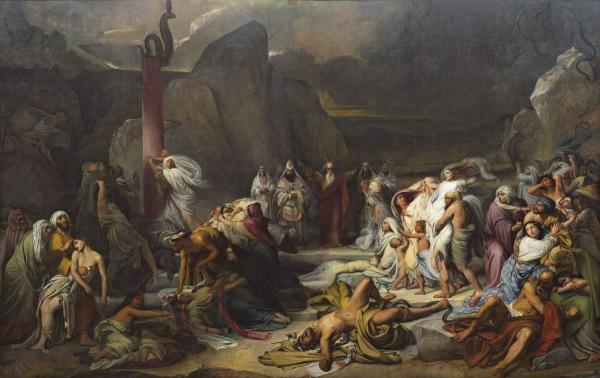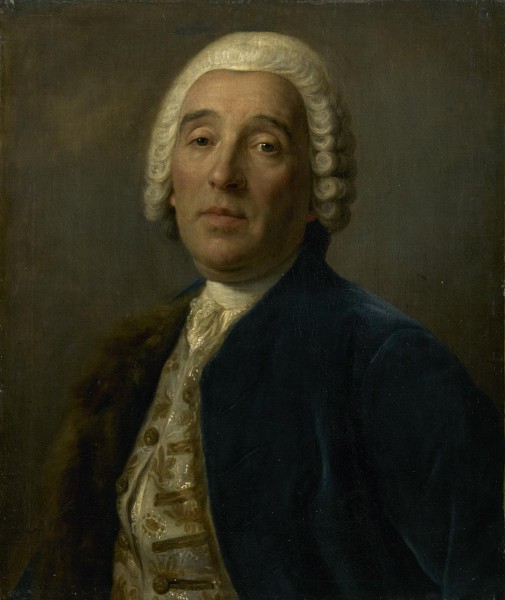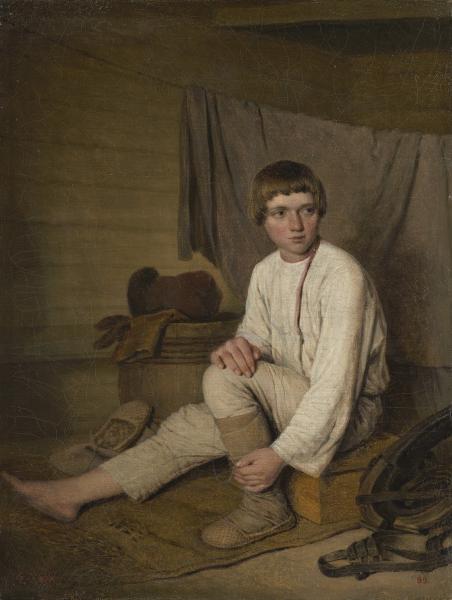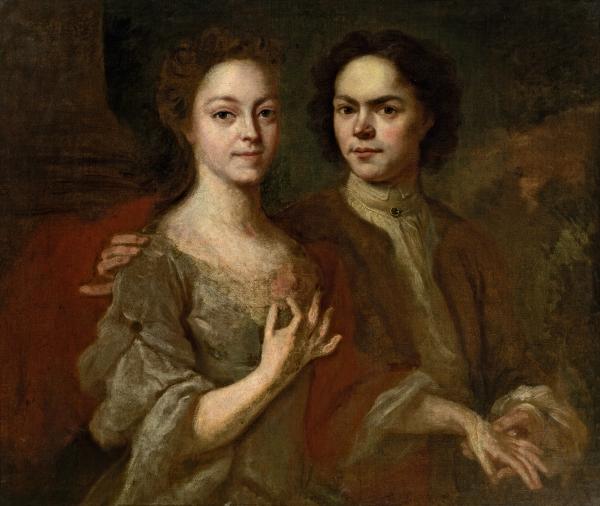The artist is Bruni

The colossal in size picture, performed by gloomy romantic pathos, is one of the latest the most significant paintings of the academic art of the era of classicism, work on which has been going on for many years. The artist was based on the plot taken from the Old Testament.
The people of Israel, wandering around the desert, have grown up to God and Moses: "Why did you bring us out of Egypt to die in the desert? For there is no bread, no water, and this food has been disgusted by our souls". The angry Lord sends toxic snakes that sting people, horror and devastation around. The Israelis turn to Moses, admitting that they have sinned against the Lord, and pray for getting rid of misfortune. Yahweh says to Moses: "Make a copper serpent, put it up so that everyone who is stung, looking at him, remains alive". Thus, Moses saves people from death.
The artist individualized images and defeated the narrative into a number of various scenes. Through the whole picture, one common movement passes, justified by the meaning of the plot: from right to left to a pillar with the statue of the serpent. This movement allows you to achieve unity of impression of a giant multi -figure canvas. At one time, the picture was as popular as "The last day of Pompeii" To. P. Bryullov.
+ About the restoration of the work
– Hide the text about restoration
The state of safety before restoration:
By the time of the complete restoration of the picture, the author’s canvas was very weakened and oxidized, became fragile. The edges have noticeably dilapidated and poorly held the canvas on the subframe. On the front side, the painting was repeatedly overlapped with new layers of varnish – “refreshed”, records were performed. Over time, all late layers darkened, aged and ceased to correspond to the color of the author’s painting. A complete restoration of the monument from duplication of the base was required to the disclosure of author’s painting and returning it to the original color sound.
Complex of the events:
Restoration was carried out in two stages. The first, ending in 2000, included technical restoration, that is, strengthening the colorful layer and duplicating the base. In order to fool the base of the canvas with a surface area of 48 m2, the restorers developed a special system for fixing the canvas on a temporary lightweight metal subframe. This kind of technical restoration is unique and can be comparable only with the restoration of the canvas to. P. Bryullov “The Last Day of Pompeii”, which was held in 1995. In June 2001, the second stage began – the restoration of the picturesque layer. It was necessary to remove a large number of multi -time records, of which only part was on the surface layer. Other notes were hidden by thick layers of varnishes of different composition. In the process of research, it was found that the picture in its lower third was several times more often covered with varnish, and, therefore, optical changes below are more pronounced. The thickening of the varnish layers was carried out according to the developed scheme, in layers, with a periodic photofixation of revealing records and changes in the state of safety. Methods of recipes for removing varnishes – traditional for alcohol -shaped films. After the end of the picturesque restoration, the surface of the picture was covered with a layer of dammar restoration varnish. Toning within the losing boundaries are made according to the established methodology with oil paints.
Keeping a story. Restoration workshop of the Russian Museum – 100 years. SPb, 2022. With. 110-111.


